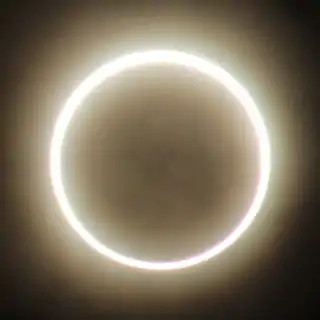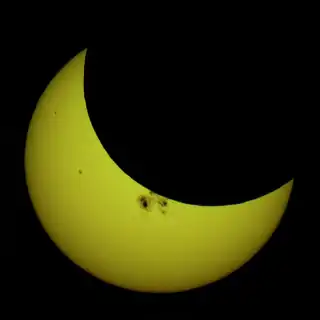| Solar eclipse of June 11, 2086 | |
|---|---|
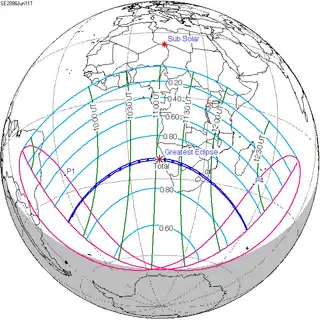 Map | |
| Type of eclipse | |
| Nature | Total |
| Gamma | −0.7215 |
| Magnitude | 1.0174 |
| Maximum eclipse | |
| Duration | 108 sec (1 m 48 s) |
| Coordinates | 23°12′S 12°30′E / 23.2°S 12.5°E |
| Max. width of band | 86 km (53 mi) |
| Times (UTC) | |
| Greatest eclipse | 11:07:14 |
| References | |
| Saros | 148 (25 of 75) |
| Catalog # (SE5000) | 9701 |
A total solar eclipse will occur on June 11, 2086. A solar eclipse occurs when the Moon passes between Earth and the Sun, thereby totally or partly obscuring the image of the Sun for a viewer on Earth. A total solar eclipse occurs when the Moon's apparent diameter is larger than the Sun's, blocking all direct sunlight, turning day into darkness. Totality occurs in a narrow path across Earth's surface, with the partial solar eclipse visible over a surrounding region thousands of kilometres wide.
Related eclipses
Solar eclipses 2083–2087
This eclipse is a member of a semester series. An eclipse in a semester series of solar eclipses repeats approximately every 177 days and 4 hours (a semester) at alternating nodes of the Moon's orbit.[1]
| Solar eclipse series sets from 2083–2087 | ||||
|---|---|---|---|---|
| Descending node | Ascending node | |||
| 118 | July 15, 2083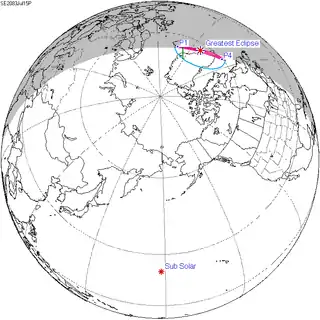 Partial |
123 | January 7, 2084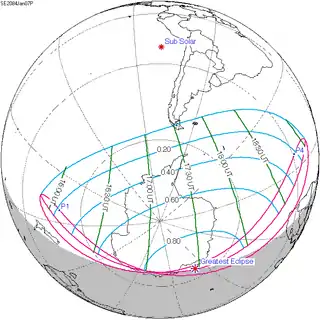 Partial | |
| 128 | July 3, 2084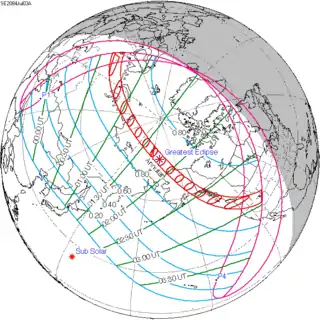 Annular |
133 | December 27, 2084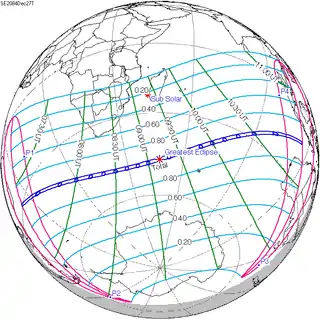 Total | |
| 138 | June 22, 2085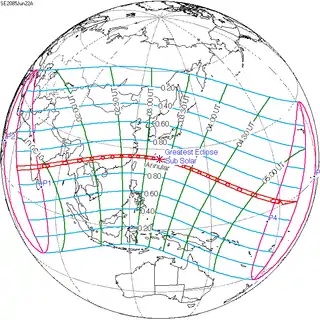 Annular |
143 | December 16, 2085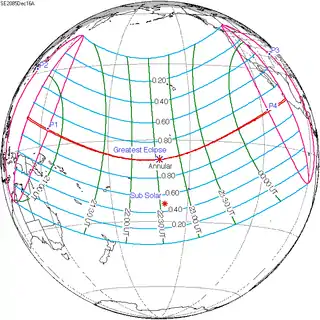 Annular | |
| 148 | June 11, 2086 Total |
153 | December 6, 2086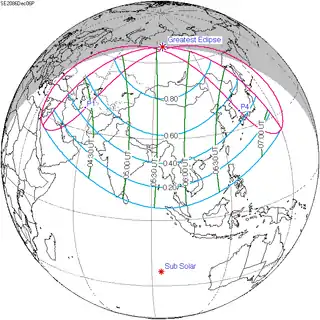 Partial | |
| 158 | June 1, 2087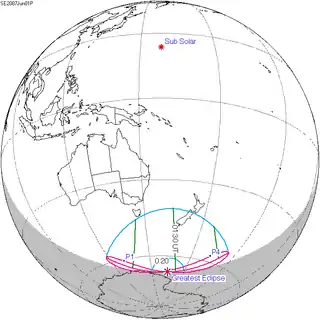 Partial | |||
Saros 148
Solar saros 148, repeating every about 18 years and 11 days, contains 75 events. The series started with a partial solar eclipse on September 21, 1653. It has annular eclipses on April 29, 2014, and May 9, 2032, and a hybrid eclipse on May 20, 2050. It has total eclipses from May 31, 2068, to August 3, 2771. The series ends at member 75 as a partial eclipse on December 12, 2987. The longest total eclipse will be on April 26, 2609, at 5 minutes and 23 seconds.[2]
| Series members 15–25 occur between 1901 and 2100: | ||
|---|---|---|
| 15 | 16 | 17 |
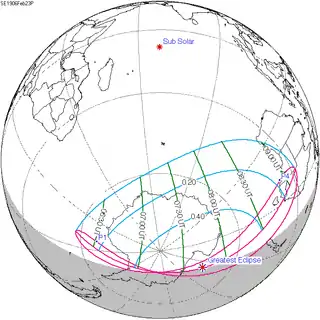 February 23, 1906 |
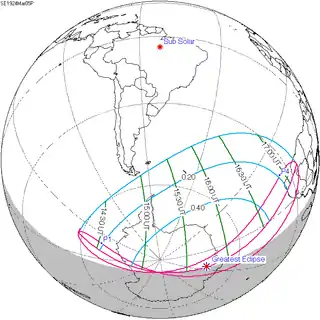 March 5, 1924 |
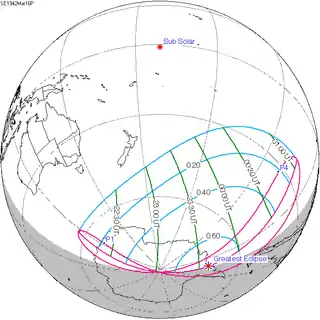 March 16, 1942 |
| 18 | 19 | 20 |
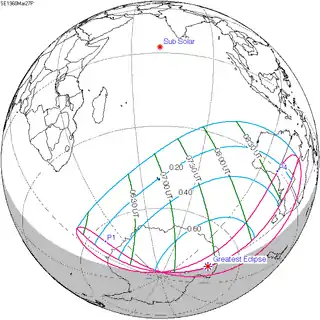 March 27, 1960 |
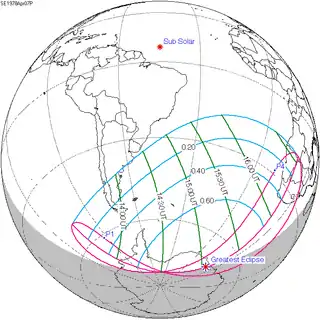 April 7, 1978 |
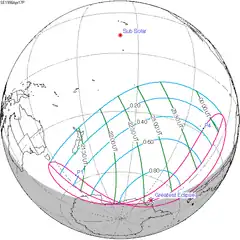 April 17, 1996 |
| 21 | 22 | 23 |
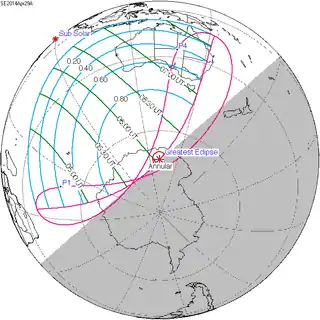 April 29, 2014 |
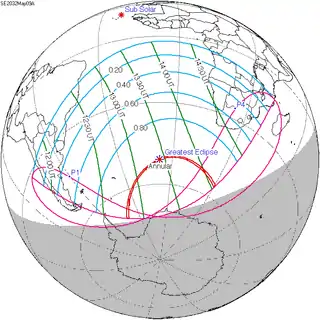 May 9, 2032 |
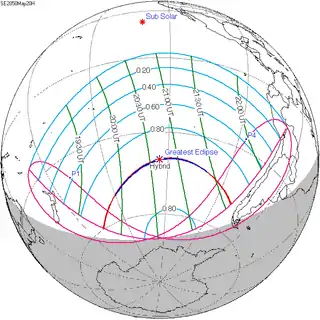 May 20, 2050 |
| 24 | 25 | |
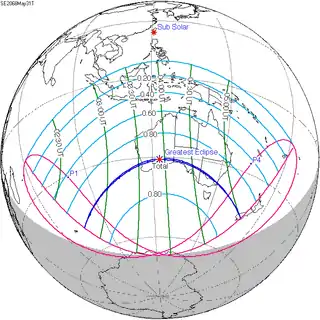 May 31, 2068 |
 June 11, 2086 | |
Metonic cycle
The metonic series repeats eclipses every 19 years (6939.69 days), lasting about 5 cycles. Eclipses occur in nearly the same calendar date. In addition, the octon subseries repeats 1/5 of that or every 3.8 years (1387.94 days).
| 21 eclipse events between June 12, 2029 and June 12, 2105 | ||||
|---|---|---|---|---|
| June 11–12 | March 30–31 | January 16 | November 4–5 | August 23–24 |
| 118 | 120 | 122 | 124 | 126 |
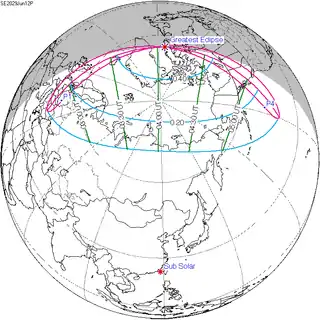 June 12, 2029 |
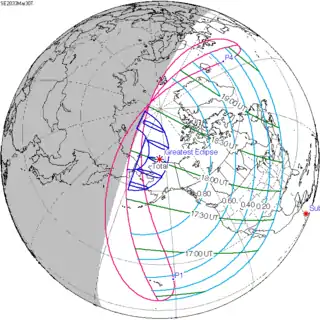 March 30, 2033 |
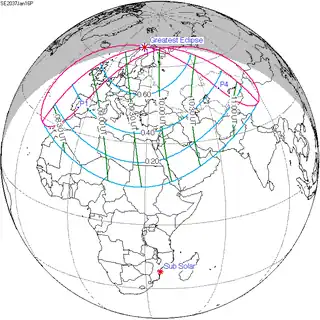 January 16, 2037 |
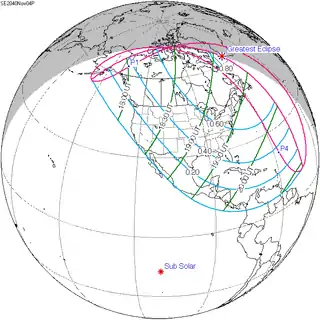 November 4, 2040 |
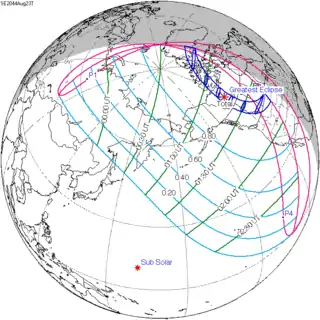 August 23, 2044 |
| 128 | 130 | 132 | 134 | 136 |
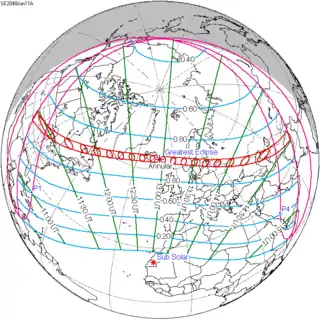 June 11, 2048 |
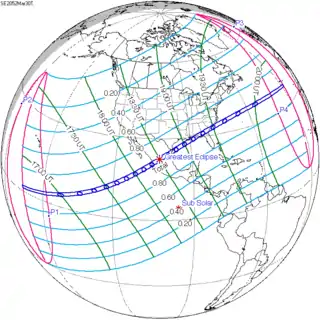 March 30, 2052 |
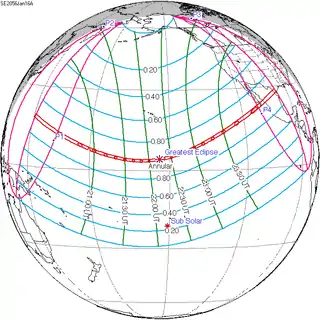 January 16, 2056 |
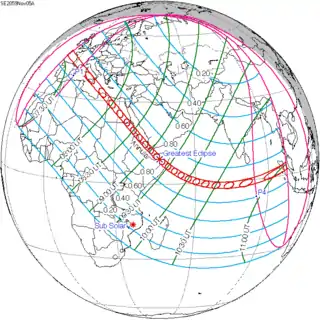 November 5, 2059 |
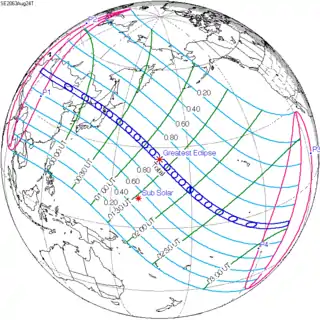 August 24, 2063 |
| 138 | 140 | 142 | 144 | 146 |
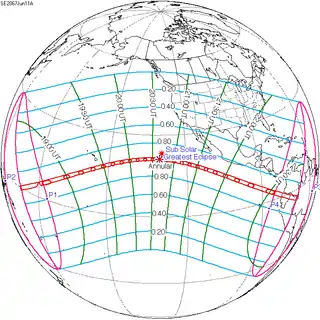 June 11, 2067 |
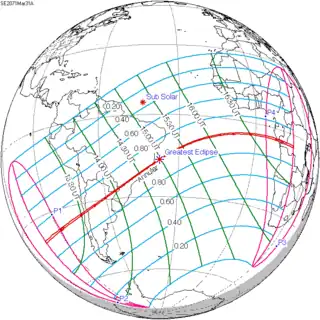 March 31, 2071 |
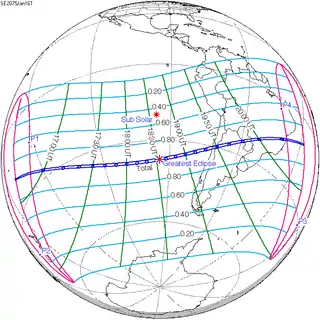 January 16, 2075 |
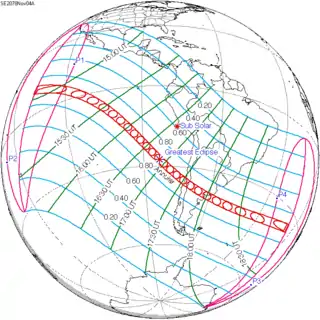 November 4, 2078 |
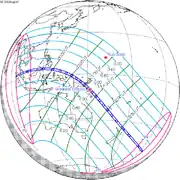 August 24, 2082 |
| 148 | 150 | 152 | 154 | |
 June 11, 2086 |
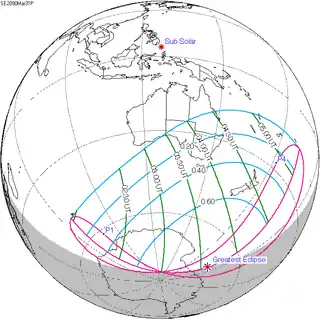 March 31, 2090 |
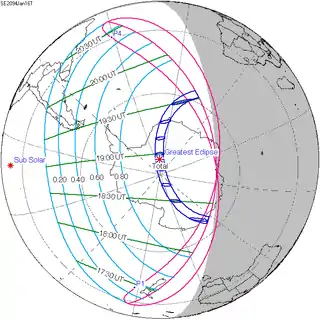 January 16, 2094 |
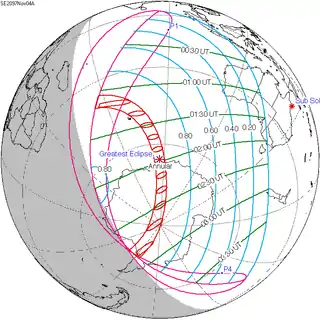 November 4, 2097 | |
Notes
- ↑ van Gent, R.H. "Solar- and Lunar-Eclipse Predictions from Antiquity to the Present". A Catalogue of Eclipse Cycles. Utrecht University. Retrieved 6 October 2018.
- ↑ Saros Series Catalog of Solar Eclipses NASA Eclipse Web Site.
References
- Earth visibility chart and eclipse statistics Eclipse Predictions by Fred Espenak, NASA/GSFC
.jpg.webp)
